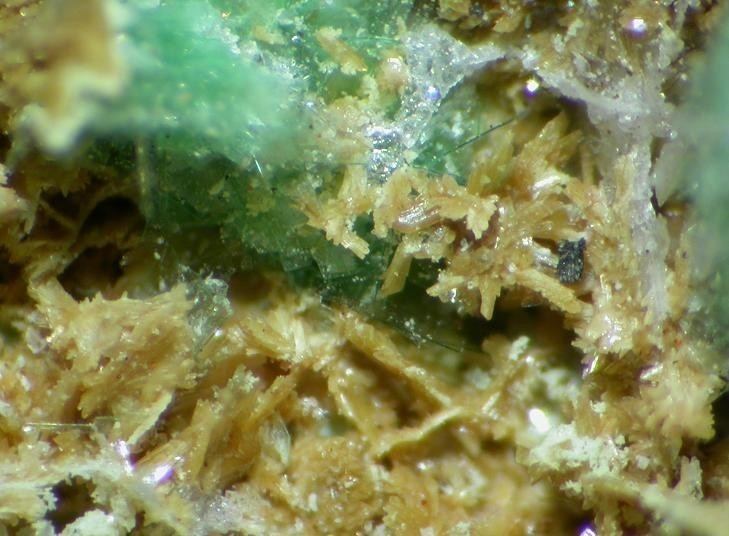Category Phosphate mineral Strunz classification 8.EA.10 Space group P1 | Formula(repeating unit) Pb2(UO2)(PO4)2·2H2O Crystal system Triclinic | |
 | ||
Crystal class Pinacoidal (1)(same H-M symbol) | ||
Parsonsite is a lead uranium phosphate mineral with chemical formula: Pb2(UO2)(PO4)2·2H2O. Parsonsite contains about 45% lead and 25% uranium. It forms elongated lathlike pseudo monoclinic crystals, radial spherulites, encrustations and powdery aggregates. It is of a light yellow colour. It has a Mohs hardness of 2.5-3 and a specific gravity of 5.72 - 6.29.
It was first described in 1923 for an occurrence in the Shinkolobwe mine, Katanga Copper Crescent, Democratic Republic of Congo. It was named for mineralogist Arthur Leonard Parsons (1873–1957) of the University of Toronto, Canada.
References
Parsonsite Wikipedia(Text) CC BY-SA
